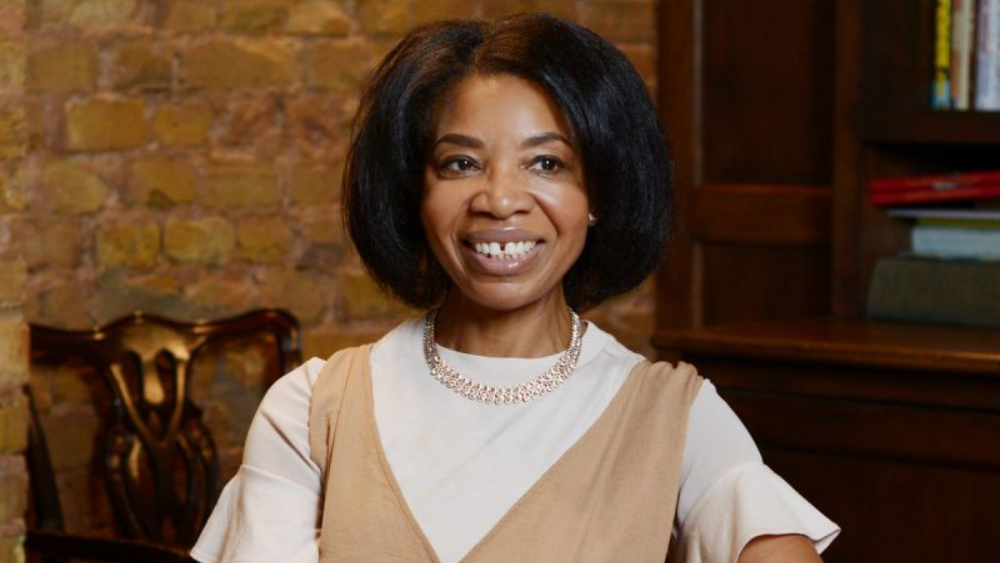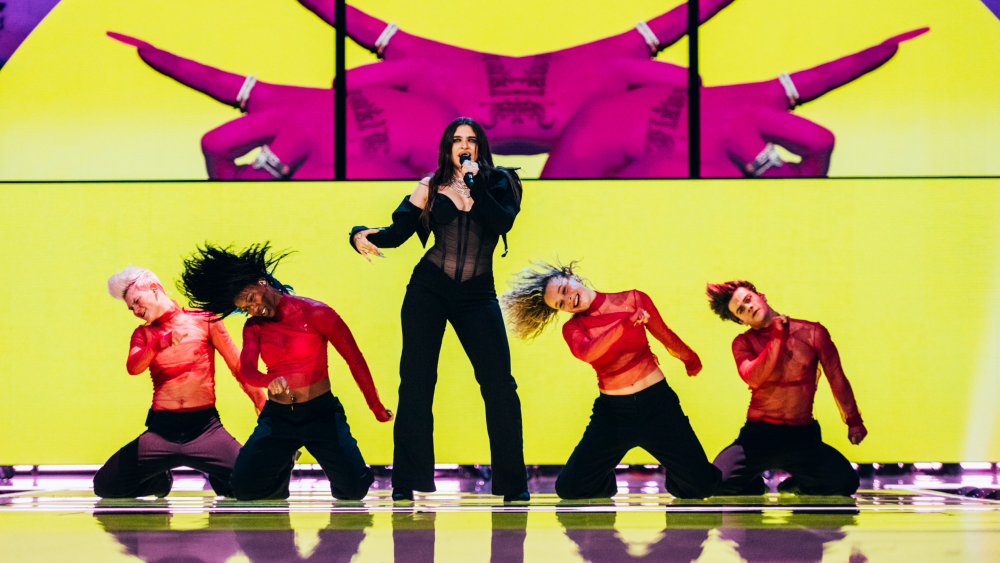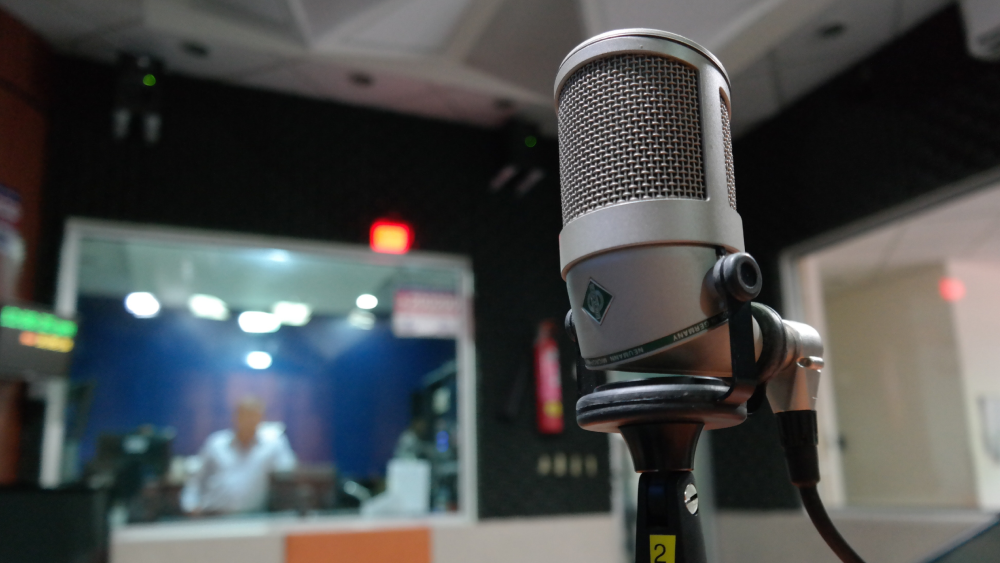Composer, producer and performer, Claire M Singer has been shortlisted in the Large Chamber Category for this year’s Ivors Composer Awards for her work Gleann Ciùin.
Known for her experimental approach to the organ, Claire's work explores rich harmonic textures and complex overtones that create ever-shifting melodic and rhythmic patterns which disappear almost as soon as they emerge.
M spoke to Claire ahead of the Composer Awards on 1 December to discuss her nominated work, her Union Chapel festival Organ Reframed and the evolution of her music.
'My interest lies with learning the personality of each organ and exposing the quirks specific to that instrument.'
Congratulations on your Composer Award nomination! How does it feel to be up for an award?
Thank you so much! I can’t quite believe it. I am absolutely thrilled and hugely honoured to be recognised by the Ivors Academy. Also to be in such wonderful company amongst a truly inspiring group of composers and sound artists.
Can you tell us about your nominated work, Gleann Ciùin?
Gleann Ciùin (Quiet Glen in Scottish Gaelic) for organ, four cellos, violin, viola and two horns was commissioned by the London Contemporar Orchestra for the PRS Foundation New Music Biennial with support from the Richard Thomas Foundation. The piece premiered on 5 July 2019 at the Queen Elizabeth Hall on their 1967 Flentrop organ, which was restored just in time for me to start writing. I also spent quite a bit of time developing the piece at the university in Hull where I gave the second performance as part of the same festival.
For the past four years since releasing my debut album Solas on Touch, I have been focused on writing for organ and cello. My approach to the organ involves experimenting with mechanical stop action. If you pull out a stop really slowly, you can control how much wind enters the pipe. I use chopsticks or straws to hold down notes so I can precisely manipulate the stops, continuously tweaking and exploring as I progress the melody of the piece. This affects the tuning and you can create wonderful beating patterns and overtones which constantly evolve.
Gleann Ciùin gave me the opportunity to write a work for larger forces with the integration of my approach to the organ. I have written orchestral pieces in the past but I’ve never written with myself included on the organ. It was incredibly exciting to work with the London Contemporary Orchestra in extending this palette of sound to the rest of the ensemble.
Where did your relationship with music begin?
I started playing cello when I was seven and piano at 11. From an early age, I much preferred writing my own melodies. I then started playing in bands from the age of 13 or 14 (first on keyboards and later adding my cello and accordion) and when I got my own Roland keyboard, which could record multi-track, my compositions expanded quite dramatically into multi instrumental arrangements and that was it. I went on to study performance and studio composition at Goldsmiths College in London.
I started playing organ when I joined Union Chapel as music director of the organ in 2012. I have been composing for organ for about 14 years but the early pieces were written for another organist to play. I had keys to one of the most beautiful organs in the world, so used to sit for hours and experiment. I’ve never had an organ lesson but I developed my own way of playing and slowly reduced the amount of electronics I was using.
What is it about the organ that inspires so much creativity within you?
The organ can produce such a wide range of colour/sound. When approaching the instrument, if you think of it more as a sound source rather how it can be played conventionally, the possibilities of timbre and texture are endless. Each organ is specific to the space it is installed in and that space is very much a part of the instrument, so you are effectively playing the space. This allows for experimentation with the acoustics and of course each time you play or write on a different organ you have to learn that instrument and space, making each performance and recording very unique. My interest lies with learning the personality of each organ and exposing the quirks specific to that instrument. When performing this can be quite terrifying if there’s not much time to prepare, but the beauty is that the piece sounds different on each organ making it a very site specific.
How do you feel your music is evolving as you progress as a composer and an artist?
I think my work has naturally evolved over time from various creative experiences; playing in bands and orchestras and studying composition at university. A major turning point for me was when I started playing the organ. This ultimately developed my voice to where it is now. Gleann Ciùin was a monumental creative moment as I combined a larger ensemble with the organ. I would definitely like to continue exploring writing and performing with larger forces in the future.
How do you adapt your approach to composition when it comes to writing for screen?
I have written one film score which was for Tell It to the Bees directed by Annabel Jankel in 2019. It was probably the steepest learning curve of my entire career to date, but incredibly exciting and fun. The score is a mix of cello, organ, electronics and also orchestra from the brilliant London Contemporary Orchestra. It’s definitely a different beast writing for film as opposed to my own album material and I had to learn pretty quickly to hold back and take on more of a supportive role to the picture.
Luckily, I had an extremely supportive director who is very passionate about music so she really pushed me, which was hard but the best way to learn. Writing short cues was also a challenge at first. My own album material consists of tracks spanning from seven-30 minutes!
'To have the opportunity to build on the organ’s rich history and bring it to the attention of a new generation of artists feels hugely important.'
You are music director of the organ at the Union Chapel – one of London’s most iconic venues. Have you witnessed first-hand the impact of the pandemic on venues such as this?
Like all venues Union Chapel have been significantly impacted by the current pandemic and are being forced to look at various ways to adapt. It is incredibly sad to see our much-loved venues across the UK struggle to keep afloat and some we have lost for good. The venues of course need artists and it’s terrifying that despite making plans, the future for us is still unknown.
Can you tell M readers a bit about Organ Reframed and the idea behind it?
The idea of the festival has been a long time coming. The first three years as music director of the organ at Union Chapel was transitioning the organ from its full restoration into developing a programme of concerts and educational workshops. This was a three year Heritage Lottery funded programme. This gave me a chance to test the waters with different ideas and develop a regular organ concert presence at the chapel of all different genres. In 2016, I felt ready to push the boundaries further and start an experimental organ festival of new commissions and Organ Reframed was born.
The organ has one of the largest repertoires and has a strong classical concert organ scene and that is equally important. In my opinion, we should embrace its historic repertoire but also help it to grow. There aren’t many contemporary composers writing for the organ as access can be tricky; most organs are in churches so you need to know someone with a key! In order to really explore and write innovative music you need time with the instrument.
The main aim of Organ Reframed is to commission artists and composers to write new works; to allow them time on the organ to develop ideas and ultimately help develop the organ repertoire and show that this is an instrument that is very much capable of being at the forefront of new music today.
Since the beginning I have had a strong partnership with the London Contemporary Orchestra and each year we think about new instrumental configurations with the organ for the commissions that year. I also commission a sound installation each year which draws inspiration from Union Chapel’s 1877 Henry Willis organ. To have the opportunity to build on the organ’s rich history and bring it to the attention of a new generation of artists feels hugely important. Over the past few years the festival has commissioned so many incredible artists including Éliane Radigue, Low, Hildur Guðnadóttir, Adam Bryanbaum Wiltzie, Philip Jeck and Phill Niblock to name a few. We have also been fortunate to have organists including James McVinnie and Frédéric Blondy perform these new commissions.
I have had to reschedule Organ Reframed 2020 twice now but I am hoping it will go ahead on the 17-19 September 2021. We have new commissions from Anna von Hausswolff, Abul Mogard, Ipek Gorgun plus Chris Watson and I have written a 90 minute immersive aural journey from Pole to Pole performed by Chris and I with the London Contemporary Orchestra and Choir.
You received an Oram Award in 2017 for innovation in sound and music. How important do you think organisations like the Oram Awards are in diversifying audio technologies?
Awards like the Orams are hugely important. There has always been a problem of women and minority gender music creators being underrepresented in the music and sound art fields. The fact that the Orams specifically target this community giving recognition and celebrating them for their innovation is critical. The arts are currently crumbling around us and awards like the Orams are needed now more than ever to instil confidence and support going forward.
If you had to give one piece of advice to an aspiring composer, what would it be?
Write as much material as you can and try to find your own unique voice and lean in. Prepare to have knockbacks, get back on your feet and just try to keep believing in yourself. It’s not an easy time to be a full-time musician but keep going the best you can and make sure you have a solid creative support network around you.
How is 2021 looking for you, pandemic permitting?
My next project hopefully starts in January in Amsterdam at Orgel Park. It's a new 40 minute commission from the Richard Thomas Foundation for one or more of their nine organs. I will then take a recording of the piece to the Funkhaus Berlin and work in MONOM Sound’s unique 3D soundspace to create a multidimensional electronic version.
I will also be recording my new album, which will be out on Touch featuring Gleann Ciùin with the London Contemporary Orchestra, and I'm hoping to tour it in some shape or form after the release but of course this is up in the air at the moment.





